This article originally written and published on Follow Me Away.
Have you ever considered traveling to Nunavut? This Arctic Canadian territory occupies 1/5 of Canada and is where you are going to want to go when you are ready to take your adventure travel to the next level, when you are tired of the norm, when you want a beautiful destination that is unspoiled by commercialism, when you want to learn about Inuit culture, and of course, when you want to see tons of wildlife! Nunavut is where you are going to want to travel to when you want to truly visit the ends of the earth. Before you travel to Nunavut, there are a few things to know to prepare you for such a life changing trip!
1. There Are No Direct Flights To Nunavut
Since the province is so remote, there aren’t a ton of flights to Nunavut. Unless you live in one of the major Canadian cities that fly direct to Nunavut, such as Winnipeg, Montreal, Ottawa, or Yellowknife, you are going to have to take multiple flights to get to the Arctic. Depending on where you want to visit in Nunavut, this could mean taking up to four flights in one day!
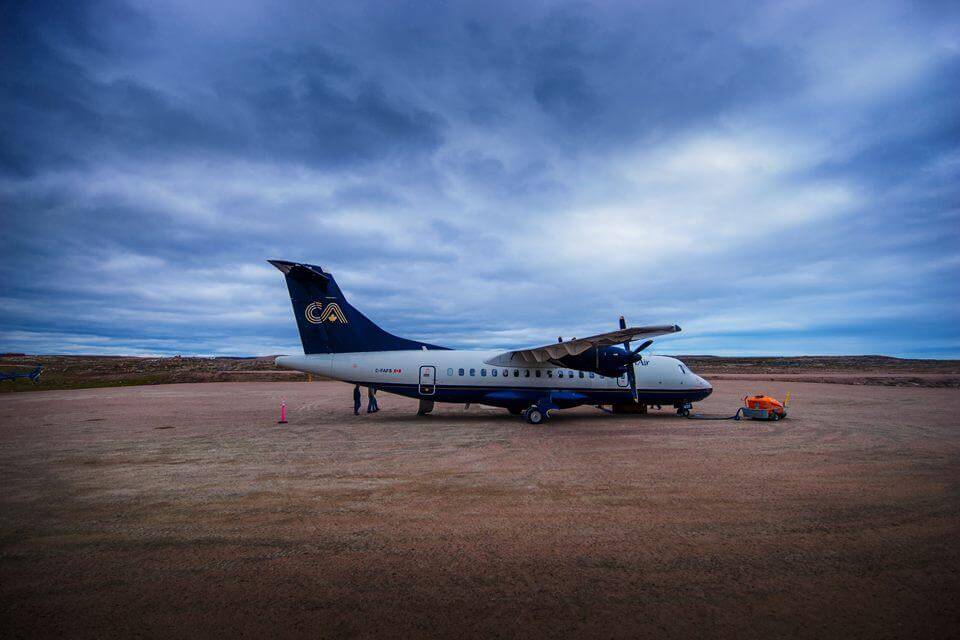
When visiting the village of Naujaat [pronounced NOW-E-YAGHT], we had to take three flights up and four flights back! Each time, the planes and airports got progressively smaller until we arrived. Although taking multiple flights would usually be a burden, these longer flights to Nunavut are all part of the fun and anticipation of getting to the Arctic!
2. There Are No Roads To Nunavut And No Roads Connecting Communities
The 25 different communities of Nunavut are not connected to each other via highway or railroad. This means that if you hope to visit, you better be okay with jumping on multiple planes to get to your destination! Once you arrive in Nunavut, traveling within the province isn’t as difficult as flight times are much shorter. Locals travel between communities by air, boat, and in winter, snow mobiles, but visitors are encouraged to travel around Nunavut by air.
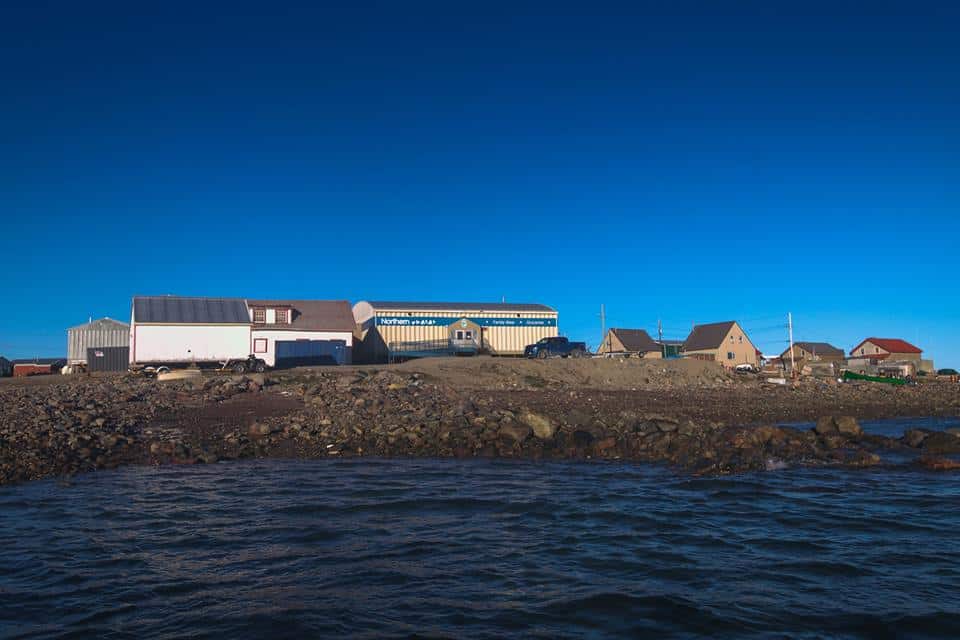
Unlike other places you may have flown around, flying around Nunavut is pretty easy and straightforward. There are not long lines for TSA and security and you don’t have to fight all the people to board quickly. Things are much more relaxed and you will be able to board quickly and easily. Everyone is friendly and you most likely won’t have to show up to the airport 2-3 hours early because many community airports aren’t even open this early before a flight. Traveling through Nunavut by air is a unique and interesting experience that we know you will love.
3. You Definitely Need To Hire An Experienced Local Guide Or Outfitter
We urge you to take heed on this point! Unless you are from the aboriginal Arctic, you are not going to be experienced enough to take this trip alone. No, visiting Iceland or Arctic Norway certainly does not count in your Arctic preparedness so please listen carefully! During our time in the community of Naujaat and the surrounding areas, we were guided by Solomon, the owner, and operator of Arctic Wilderness Outfitters. He is also a school counselor and the mayor of Naujaat, so you can be sure you are in great hands.
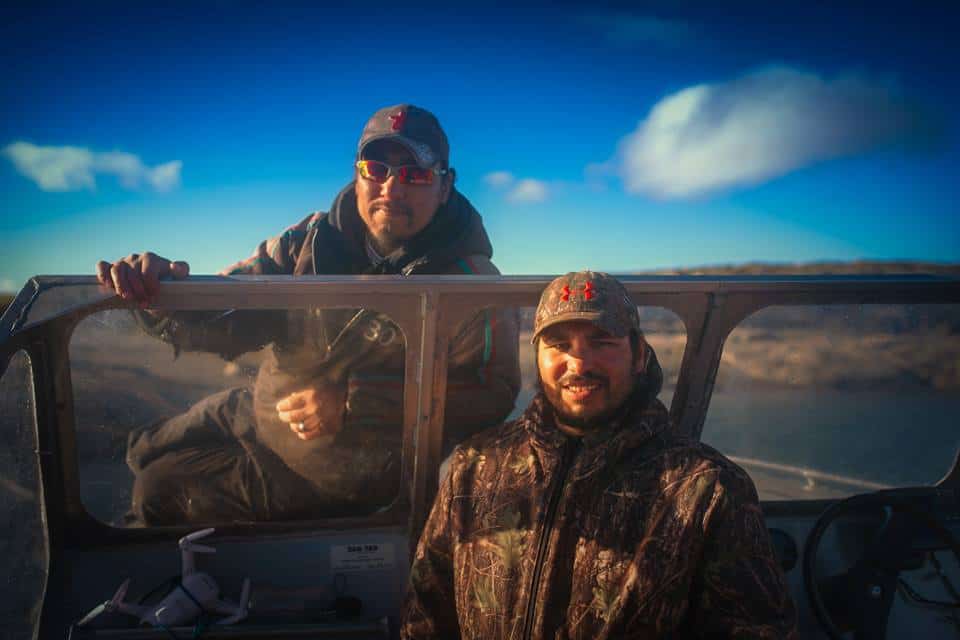
Our guide Solomon was able to provide us with meals, sleeping bags, safety information, Mustang safety suits to wear on the water, and expert first-hand knowledge on local life and the Nunavut landscape. There really isn’t a way to do such an adventurous trip alone, so hiring an experienced and trustworthy guide is essential to having a safe and fun trip. If you want to travel to the community of Naujaat, we highly recommend Solomon and Arctic Wilderness Outfitters. This was the first time we had ever worked with a guide during our travels and it was great!
4. You Will Learn A Great Deal About Nunavut Culture
A trip to Nunavut means an immediate lesson on Arctic Canadian culture from the second you sit down in the plane. Yes, the airline magazines discussed Nunavut culture and the woes Inuit have undergone for centuries at the hands of foreign governments as well as their triumphs and successes. If you travel to Naujaat like we did, you will meet friendly Aivilingmiut (‘people of the Walrus place’), direct descendants of the ancient Thule people with a 95% Inuit ethnic distribution.

The languages spoken in Naujaat and in much of Nunavut are Inuktitut and English. The locals in Naujaat were perfectly fluent in both languages, save a few of the older adults. We loved learning about the Nunavut hunting culture from our guide Solomon. He told us that the Inuit are appalled by factory farming and hunting for sport that much of North America loves to partake in. No, in Nunavut, locals hunt out of necessity and use every part of the animal. One whale hunted by locals in Naujaat can last the entire community and surrounding communities up to two years of food! Animal skins and horns are used for bedding, winter clothing, carvings and more and Inuit have a great respect for animals.

5. You Can Stand On A Real True Floating Iceberg
When we stood on a small ice chip on the shore of Iceland’s glacier lagoon, we were met with backlash [and still are unsure why.] Here in Nunavut, we were not only allowed to stand on floating ice, we were encouraged and it wasn’t even our idea! If you are slight daredevils like we are, the prospect of standing on a piece of ice in the Arctic ocean at a depth of 400 feet floating on water that can kill you in minutes will surely excite you!
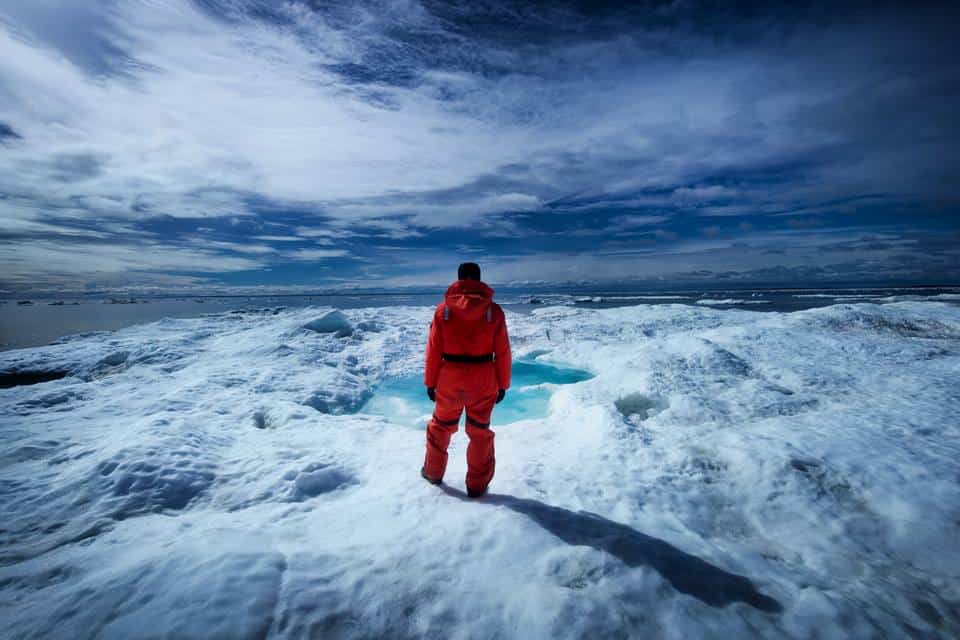
Although we were initially nervous about the idea, Solomon informed us that it is actually quite safe. He showed us how to pick out the perfect pieces of ice to safely stand on, discussed the depth of the ice itself [some went 20-30 feet down into the water], and allowed us to drink from pure-as-can-be wells of literal ice water that had collected on the ice piece. We even docked the boat on a few ice pieces and had lunch or just got out for photos!
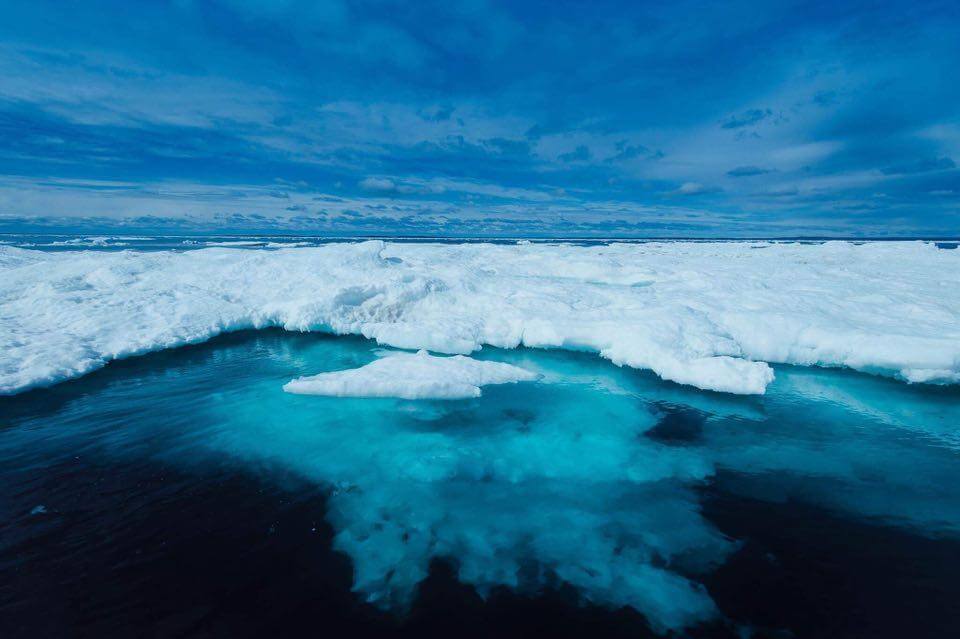
A few times during our trip, Solomon dropped one of us off on a floating piece of ice and drove the boat out into the arctic ocean for some pretty swell photos! Standing on that piece of ice with no boat nearby was an experience as you could feel the piece moving with the ocean and crashing into other ice pieces of equal or bigger size! It was such a thrill and was one of our favorite things to do in Nunavut!
6. You May See Tons Of Wildlife, But Don’t Play The Blame Game If You Don’t
Like all things surrounding nature, nothing is set in stone and Mother Nature will do as she pleases. One of the major complaints from outfitters is that people blame them if they do not see wildlife. Solomon told us a guest was once unhappy that he didn’t take them into a dangerous situation between the ice! Trust your guide, they know more about the local wildlife than you do!
During our trip, we saw two kinds of seal, tons of seabirds, and narwhal. Depending on what time of year you visit Nunavut, you can see polar bears, beluga whales, walrus, and more. Go in with an open mind but for the love of everything good don’t blame your guide if a whale decides it is going to chill somewhere else during your trip.

7. You Will Get To Travel To Remote Locations Unspoiled By Tourism
Nunavut’s vast expanse of uninhabited territory means that you get to experience adventure travel at its finest. Unlike Iceland that has a record 3 million visitors per year or Norway that has even more, Naujaat received only 30 tourists in 2016. This year, we were only the 8-9 people to visit this Arctic community in Nunavut.
This means that travelers are truly able to experience Nunavut through the eyes of a local. There are no large stores, no chain hotels, and there is absolutely no fighting with your fellow tourist to get the best photo. Thousands of folks flock to Churchill, Manitoba for their Arctic experience, but are left fighting with all the other visitors. Only one territory away, Nunavut sits welcoming visitors with open arms and completely epic locations unspoiled by consumerism.

8. Summer Weather in Nunavut Isn’t That Bad, But Winter Weather Gets Freezing
Even for Floridians, summer weather in Nunavut wasn’t that bad at all! We spent the majority of our time in Naujaat boating on the Arctic ocean, and even then we weren’t cold! If you are heading to Nunavut in the summer, pack for the winter where you live! This means your winter jacket, winter pants, multiple layers of clothing, balaclava, and waterproof boots. This Arctic packing list we created can help you choose what to bring! Summer weather hangs out at about 30-40 °F [0-5 °C] and you get to enjoy the 24-hour sun! If experiencing the midnight sun is on your bucket list, we suggest traveling to Nunavut during the summer!

The winters in Nunavut get majorly cold! The weather goes down to a frigid -55 °F and that doesn’t include wind chill! Regular winter clothing does nothing for that kind of temperature, which is why natives make use of animal skins for warmth. If you want to travel to Nunavut during the winter, you will experience a lot of darkness, but the dancing Northern Lights will make up for it! Star gazing and Northern Light sighting in Nunavut is abundant and the pure quality of the air is unlike anywhere else.
9. You Can Choose Your Level Of Adventure When Traveling To Nunavut
Although Nunavut is typically an adventure travel destination, you are able to choose what that word means for you. Your experienced Arctic guide should provide you with options to choose from based on your skill level and comfort. We chose to stay at an amazing Inn in the community and have Solomon take us out on daily adventures. We love doing adventurous things but also like a comfy bed and a shower at the end of the day.

You could also choose to go to Solomon’s personal family cabin for rustic camping, camp out “on the land,” or even sleep on the ice itself [depending on the time of year]. We loved being able to choose our level of adventure so we could still experience the best of what Nunavut has to offer on our own terms. Just because you aren’t a camping queen/king, doesn’t mean you should write off a trip to Nunavut!
10. The Nunavut Landscape Will Exceed All Your Expectations
The Nunavut landscape will leave you truly speechless. Since there are hardly any photos out there of what Nunavut looks like, we didn’t have many expectations. Since we were told there was no snow during the summer, we thought the landscape would be flat and brown, with some tundra plants and scruffy grass. Boy were we surprised! The landscape in Nunavut is crazy diverse and all-around very epic! In Naujaat, Nunavut, the landscape is solid granite rock. There are lakes and grass and wildflowers. The granite ground is by no means flat and forms what Floridians would call a mountain or what is really known as a large hill.
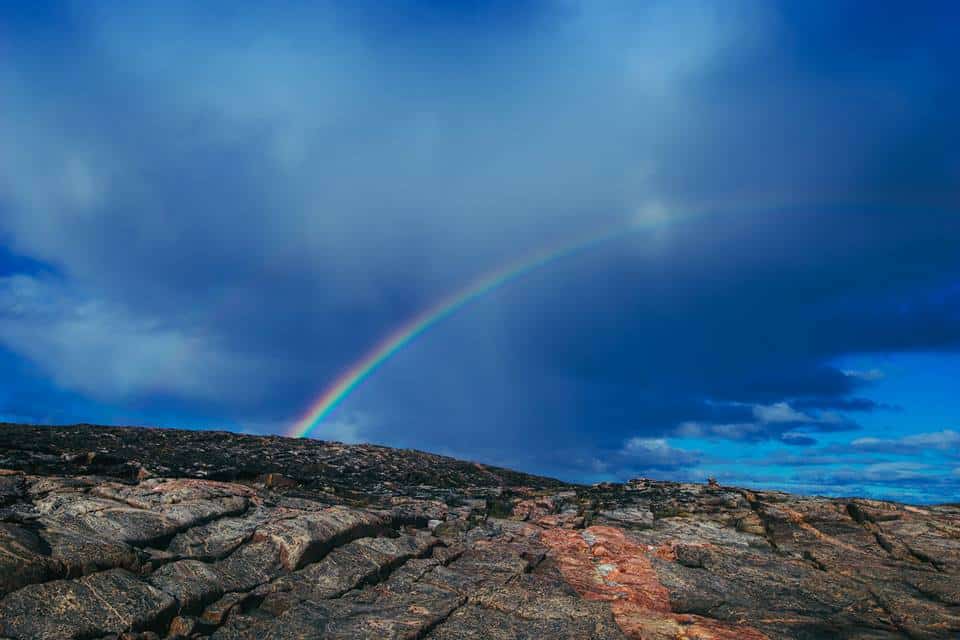
What we really didn’t expect was all of the floating ice. There was floating ice as far as the eye could see and it was moving each day. Depending on the time of year you travel to Nunavut, there may be bits of ice, it could be floating, or the entire landscape could be covered in it! We had no idea that we were going to see the Arctic ocean covered in miles and miles of floating ice that we could drive a boat in between and actually get out on. Go in with an open mind and you will not be disappointed.
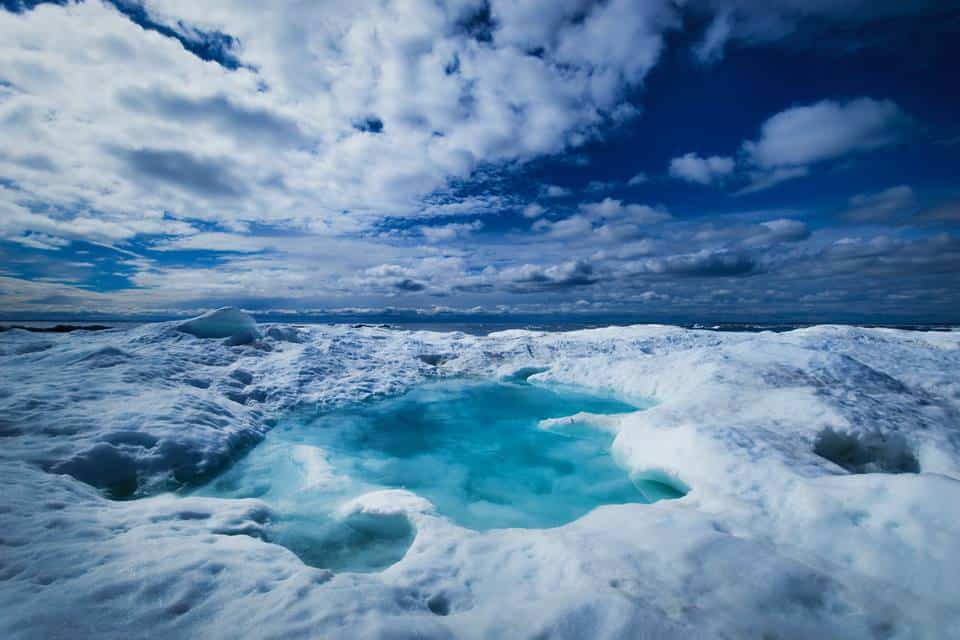
11. The Nunavut Locals Are Friendly and Accepting
As an interracial couple, traveling has its challenges and we have run into racist individuals in a variety of European countries and even Canada itself. Traveling to small towns is always a red flag on our safety radar, as smaller towns are usually much less welcoming to minorities and individuals in mixed-race relationships. Even if people aren’t overtly racist, their judgemental stares are uncomfortable and unwelcome. We did not feel this way for one second during our stay in Naujaat or during our travels in Nunavut as a whole.
The locals took the time to say hello and to talk or share about their culture. We discussed nature, hunting, culture, politics, social media, popular television shows and more and didn’t feel uncomfortable one time. There were no weird stares or racial slurs shouted and only a sense of welcome was felt. If you are a minority traveler or part of a mixed-race couple, we encourage you to travel to Nunavut and assure you you will only receive a friendly welcome!
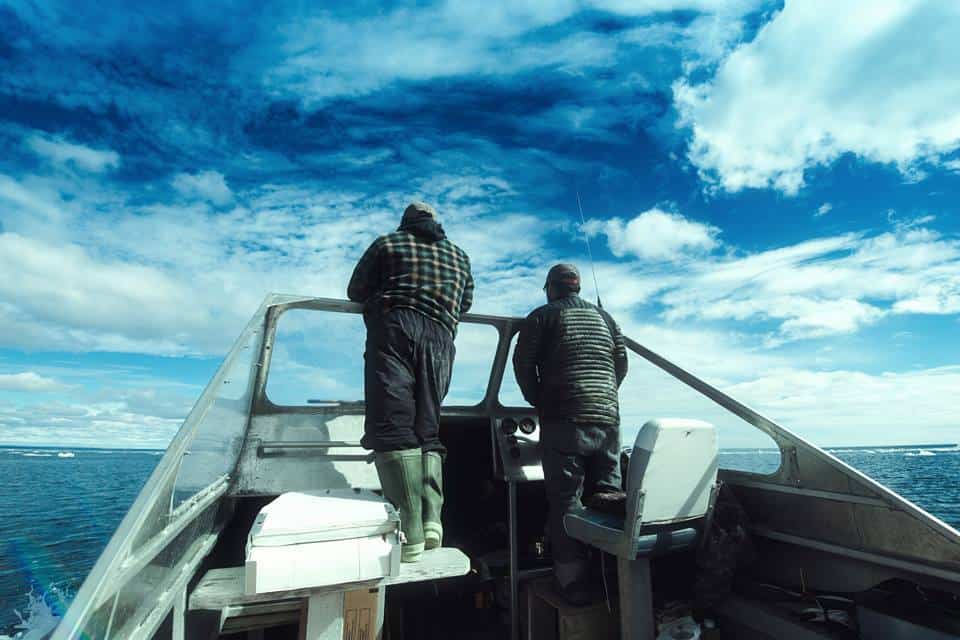
12. The Air Is Clearer And The Water Is Purer
We had heard from the Nunavut Tourism Board that the air is going to be more clear than we had experienced in the past. We weren’t sure what that meant, but when we arrived, we knew! This meant that there were less particles of pollution and that the light was ever-so-perfect. Even though pollution in the air is very fine, it makes a huge difference in the quality of the air when it is suddenly removed! Water in Nunavut is about as pure as water can get and is collected from freshwater lakes. You can even drink straight out of a floating iceberg!

13. Food In Nunavut Is Expensive
Unless you are eating meat killed by the locals, westernized food and fresh vegetables are very expensive. It is easy to see why since the Arctic isn’t the closest place to ship goods. This is another good reason to hire a guide when you travel to Nunavut. Food is often included in the price of your trip so you won’t have to worry about a thing. During our stay, either Solomon cooked us delicious meals or the manager of the Inn we stayed at cooked. Shoutout to Karen for the yummy food! If you want to eat snacks, bring them in from the south because a bag of chips is going to cost you $8-$10!
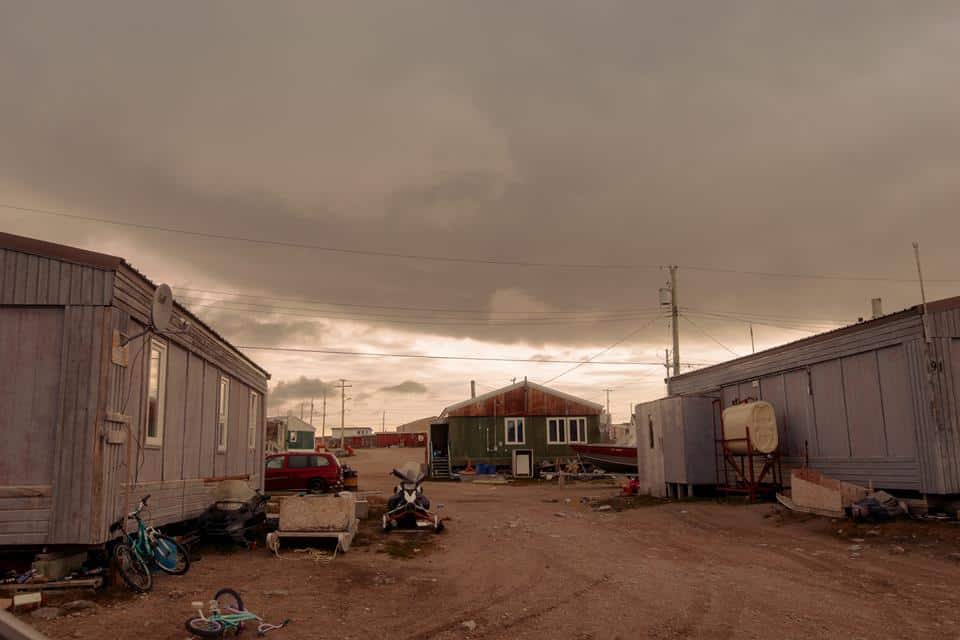
14. You Can Easily Go Shopping If You Forget Something
Just because Nunavut is remote doesn’t mean that there aren’t stores! Don’t worry about being stranded for days without being able to pick something up as there are real people who live and work in Nunavut who use these items just as we do too! If you are traveling to Nunavut and you forgot an essential item, you can head to a general store, often called a co-op, and grab what you need. Everything is much more expensive, but when you are in a pinch, the price doesn’t matter! We needed to grab cough drops and the co-op in Naujaat had 20 for about $6.
It is important to remember that the people living in Nunavut have many of the same wants, needs, and desires as anyone else so don’t worry about not being able to find an essential item if necessary.
15. Traveling To Nunavut Is A Once-In-A-Lifetime Trip
Taking a trip to the Polar Arctic is the trip of a lifetime. The best part is that such a trip isn’t even on the radar for the vast majority of travelers, even full-time travel bloggers like us, which makes it even more special when you finally decide to visit Nunavut. From the friendly natives and Inuit culture to the vast Arctic Ocean, fields of icebergs, and abundant wildlife, Nunavut is a stunning travel destination just waiting to be explored!
Best Time Of Year To Visit Nunavut
If you are considering planning a trip to Nunavut, summer is the most accessible time to visit! Depending on what you want to see and do in Nunavut, you may want to visit closer to spring or closer to fall. There aren’t many people who choose to travel to Nunavut in the winter, and the flight schedules are often changed, delayed, or canceled due to the weather. This isn’t a bad thing, just a fact of life when you live and work in the high arctic. If we had to recommend the best time of year to visit Nunavut, it would be during the summer months.
It is still cold during the summer in Nunavut, but the weather is good enough for you to easily travel around and see and do pretty much whatever you want to experience. Whether you are looking to go camping out on the land, to visit villages and learn about local traditions, or see ice flowing in action, the summer is the best time of year to visit Nunavut. Another perk of visiting Nunavut during the summer is the fact that you get to see and experience the “midnight sun” which is when the sun never sets. This is such a fun thing to experience and we highly recommend planning your trip to Nunavut around this time of year.
What To Pack For Nunavut
Pack for Nunavut like you would if you were going to any other cold-weather destination. Visiting Iceland? Hiking in the Rocky Mountains during the winter? Visiting a cold city in January? Pack as if you would be visiting these places, depending on what it is you want to be doing in Nunavut. Of course, things will be much different if you are looking to visit one of the larger towns in Nunavut versus if you are looking to go camping out on the land and exploring with a local guide for a few days as you sleep in the elements.
No matter what you choose to do, here are five things we recommend packing for your trip to Nunavut!
- Balaclava: Since Nunavut can be windy, especially if you are on a boat, skip packing a scarf that will blow off and choose a balaclava instead. They protect your face and neck from arctic winds for less than $10 and they won’t blow off like a scarf. Balaclavas tuck into your shirt and can be worn underneath a hat so you can enjoy all the protection they have to offer without all the bulk. We loved using our Balaclava while in Nunavut!
- GoPro: If you are looking for an easy way to capture great photos and videos during your trip to Nunavut, a GoPro should top your Nunavut packing list. You can invest in a GoPro that is top of the line or stick with an older model like the GoPro Hero 3 which is what we have traveled with before. GoPros are durable and waterproof and perfect to pack for a trip to Nunavut.
- Daypack: Since you won’t be trekking your suitcase around, a daypack is the perfect travel item to carry your essentials for the day including a snack, extra clothing, water bottle, etc. If you want to add a daypack to your Nunavut packing list, Look for one that folds up so you can pack it in your luggage and take it out upon your arrival.
- Extra Food: It doesn’t hurt to pack some freeze-dried meals when traveling in Nunavut. If you are traveling with a guide, food will usually be provided, but if you have a special dietary concern or want to choose what you are eating, buy online before you go! Buying them online or at your local grocery store will be a fraction of the cost of buying food in Nunavut since the territory is so remote.
- Wool Socks: There isn’t too much to say on why you should pack wool socks other than wool is the single best fabric for keeping you warm and has been for centuries. We tried to do a cold-weather trip without wool socks and it was a huge mistake. Since you will be outdoors a lot when exploring Nunavut, make sure your feet stay warm and dry at all times. Wool socks will save your feet!
We hope this post has inspired you to plan a trip to Nunavut. This destination is far from popular and that is a shame because it is so beautiful and remote with wonderful people who just love to share their culture and beautiful landscapes with visitors. If you have any questions at all about visiting Nunavut, please feel free to reach out to us. We always love to encourage others to travel to Nunavut as it made such a great impression on us when we visited!

